45 how to read the sugar label on food labels
How to Read Food Labels | mySugr Before reading the rest of the label, look at the serving size. The rest of the information — such as carbs, calories, sugars, fiber, and more — will be based on the serving size that's listed. Eating more than a serving size means you'll get more carbs, sugars, and calories than what's listed. Looking at the serving size also helps ... Reading Food Labels | ADA - American Diabetes Association The Nutrition Facts labels on foods are really the key to making the best choices. We'll cover the basics so that these labels make shopping easier for you. You've heard it all. From carb-free to low-carb, to whole and empty carbs, it's hard to know what it all means. Blood sugar highs and lows aren't always easy to understand.
"You can't just eat 16 teaspoons of sugar so why would you drink 16 ... Background Several jurisdictions have introduced nutrient warning front of pack (FoP) labels in an effort to curb consumption of ultra-processed foods and beverages high in free sugars (sugars added to foods and beverages, and sugars naturally present in honey, syrups, fruit juices and fruit juice concentrates). This study aimed to explore consumer understanding and perceptions of FoP warning ...

How to read the sugar label on food labels
5 Tips from an Expert on How to Read Food Labels - FoodPrint The next step is choosing grassfed, looking for a label like "Certified Grassfed by AGW" or "PCO Certified Grassfed." "The nutrient density and fatty acid profile of [milk and beef] is much better when you finish cows on grass, rather than corn [which is typical in industrialized animal production]," Urvashi explained. Food Labels | CDC If you eat the whole thing, you are eating 8 times the amount of calories, carbs, fat, etc., shown on the label. Total Carbohydrate shows you types of carbs in the food, including sugar and fiber. Choose foods with more fiber, vitamins, and minerals. Choose foods with lower calories, saturated fat, sodium, and added sugars. Food Labels and How to Read Them - Diabetesnet.com Food Labels and How to Read Them. Packaged foods have a "Nutrition Facts" label that provides nutritional information, including the number of calories and the grams of protein and fat. These labels also give the exact number of grams of carbohydrate contained in a serving and the size of this serving. Packaged foods have a "Nutrition Facts ...
How to read the sugar label on food labels. How to Read Food Labels | mySugr Check the Serving Size Before reading the rest of the label, look at the serving size. The rest of the information - such as carbs, calories, sugars, fiber, and more - will be based upon the serving size that's listed. Eating more than a serving size means you'll get more carbs, sugars, and calories than what has been listed. How to Read Nutrition Labels for Sugar - hekagoodfoods Where to Find the Nutrition Label Why Added Sugar is on the New Nutrition Labels What to Look for in the Ingredients List Top Three Ingredients Sugar Listed Under Multiple Names More Fiber, Less Sugar Where to Find the Nutrition Label You'll usually find the nutrition facts label on the side or back panel of a packaged food. safefood | How to read food labels How do I know if a food is low, medium or high in fat, saturated fat, sugar and salt? Some labels use colour coding to show at a glance if a food is high, medium or low in fat, saturated fat, sugar and salt. Low (green) - the best choice Medium (amber) - okay most of the time High (red) - only choose occasionally. If the label isn't colour ... Understanding food labels - Diabetes UK Check the ingredients list - if syrup, invert syrup, cane sugar, molasses or anything ending in 'ose' is within the first three ingredients, this suggests the food contains more added sugar. Choose an alternative if possible, or be mindful of the portion you eat. Check the fibre content on the back of pack label.
13 Misleading Food Label Claims and How Not to Be Tricked 1. Label Says "Sugar-Free". The Food and Drug Administration (FDA) provides guidelines for a variety of common food labels, including sugar-free. While the term suggests that products labeled this way would be completely free of sugar, they can actually contain up to 0.5 grams of sugar in a single serving size. Added Sugars on the New Nutrition Facts Label | FDA Labels for foods and beverages with added sugars will list the number of grams and the percent Daily Value (%DV) for added sugars within the Nutrition Facts label. Having the word "includes" before... Food labels - NHS Colour-coded nutritional information tells you at a glance if the food has high, medium or low amounts of fat, saturated fat, sugars and salt: red means high amber means medium green means low In short, the more green on the label, the healthier the choice. PDF How to Read the Food Label - Risk Services Look for low- sodium foods with less than 140 mg per serving. Track the total amount you eat. Fiber. Aim for 25 to 38 grams of fiber per day. Sugars: Limit added sugars. Some vitamins and minerals may be listed with DV in one serving. Percent Daily Values (DV) tell you how much you should be eating based on a 2,000 or 2,500 calorie diet.
Reading food labels: Tips if you have diabetes - Mayo Clinic Look for foods with 3 or more grams of fiber. Put sugar-free products in their place Sugar-free doesn't mean carbohydrate-free. Sugar-free foods may play a role in your diabetes diet, but remember that it's equally important to consider carbohydrates as well. A sugar-free label means that one serving has less than 0.5 grams of sugar. How to read labels for added sugar - That Sugar Movement Look past the clever marketing and fancy health claims on the packaging and learn how to read labels and identify added sugars. Here is our three-step guide on how! One: Look for foods under 5g total sugar/100g. In Australia, the Nutrition Information Panel (NIP) on the back of food and drink packaging lists total sugars content. Learning To Read Labels :: Diabetes Education Online On a nutrition food label, subtract the fiber from the total carbohydrate amount. When you read food labels, the grams of sugar are already included in the total carbohydrate amount, so you do not need to count this sugar amount separately. The grams of sugar listed include both natural sugars, from fruit or milk, and added sugars. Are You Confused? How to Read Sugar Labels - Thin Strong Healthy You need to know. Start dividing those grams of sugar by 4 to give you the teaspoons in a serving. Then look at the serving to see what a realistic amount would be for an actually serving. Learn to read sugar labels. They think you don't know what they're doing. Now you do. Take back your health, and don't let big food win!
How To Read Food and Beverage Labels - National Institute on Aging Be on the lookout for terms that indicate added sugar, such as brown sugar, corn sweetener, corn syrup, dextrose, fructose, and high-fructose corn syrup. Artificial sweeteners such as sucralose, saccharin, aspartame, and acesulfame should also be consumed in moderation.
Learn How to Read Supplement Labels With These Tips - CNET How to read dietary supplement labels. You will find the supplement facts label on the bottle or box of the supplement. Below, we've covered each area of a dietary supplement label so you'll know ...
Understanding food labels - Action on Sugar Step 1 - Calculate amount of sugars per gram by dividing the amount of sugars per 100g OR 100ml by 100. Step 2 - Check the weight of a recommended portion as stated on the pack. Step 3 - Work out the amount of there is per portion by multiplying the figures from step 1 and 2.

The 61 names of sugar – Read the food labels for hidden sugar | Food labels, Reading food labels ...
How to Read a Nutrition Label: The Path to More Empowered Eating Choices Nutrition and Percent Daily Value (DV) Remember that companies must disclose what their food provides you in nutrients. To figure this out, multiply the number of servings you consumed (or plan to consume) by the calories and grams of fat, sodium, sugar, and carbohydrates provided on the food label.
How To Read Food labels for Sugar | My Sugar Free Kitchen On the label check the sugars in the nutrition panel. 5g/ml or less of sugar per 100g/ml = this would count as low sugar content. It means 5% of the ingredients are sugar Between 5g/ml and 20g/ml of sugar per 100 grams = medium sugar content. With 20ml of sugar per 100 ml, this means the product is 20% sugar…not so good.

How to Read Food Labels on a Low Sugar Diet. Look at Sugar & Carbs. Note if its per 100g OR per ...
Understanding sugar content on food labels - Diabetes Care Community On a food label, the total amount of carbohydrate in grams is listed first. This number includes starch, sugars and fibre. Fibre does not raise blood sugar levels and should be subtracted from the total carbohydrate. Say, for example, one serving of food contains 36 grams of carbohydrate, which includes 6 grams of fibre.
Reading Food Labels When You Have Diabetes - WebMD At least 25% less cholesterol and 2 g or less of saturated fat. Calorie free. Less than 5 calories. Low calorie. 40 calories or less. Light or lite. 1/3 fewer calories or 50% less fat. Other ...
Sugars on food labels - Sugar Nutrition Resource Centre It shows this information in a serve and also in 100ml (liquid) or 100 grams (solid foods). Sugars are included as part of the carbohydrates that are listed in the nutrition information panel, as well as being listed separately as 'sugars'. The amount of sugars in the nutrition information panel will include naturally present sugars, such as ...
How to Understand and Use the Nutrition Facts Label | FDA manufacturers are encouraged, but not required, to use the "†" symbol immediately following the added sugars percent daily value on single-ingredient sugars, which would lead to a footnote...
Food Labels and How to Read Them - Diabetesnet.com Food Labels and How to Read Them. Packaged foods have a "Nutrition Facts" label that provides nutritional information, including the number of calories and the grams of protein and fat. These labels also give the exact number of grams of carbohydrate contained in a serving and the size of this serving. Packaged foods have a "Nutrition Facts ...
Food Labels | CDC If you eat the whole thing, you are eating 8 times the amount of calories, carbs, fat, etc., shown on the label. Total Carbohydrate shows you types of carbs in the food, including sugar and fiber. Choose foods with more fiber, vitamins, and minerals. Choose foods with lower calories, saturated fat, sodium, and added sugars.
5 Tips from an Expert on How to Read Food Labels - FoodPrint The next step is choosing grassfed, looking for a label like "Certified Grassfed by AGW" or "PCO Certified Grassfed." "The nutrient density and fatty acid profile of [milk and beef] is much better when you finish cows on grass, rather than corn [which is typical in industrialized animal production]," Urvashi explained.

Cottage Law Label Bakers Label Cookie Product Label DIY | Etsy | Ingredient labels, Label ...
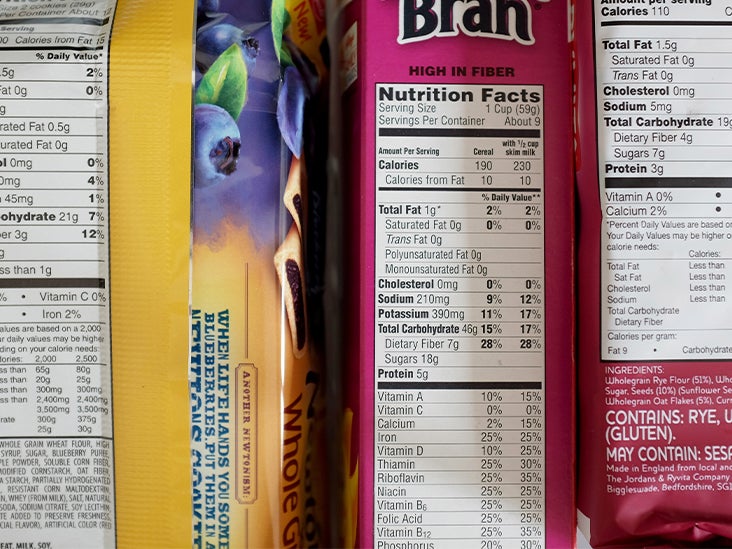
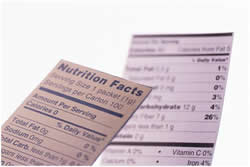
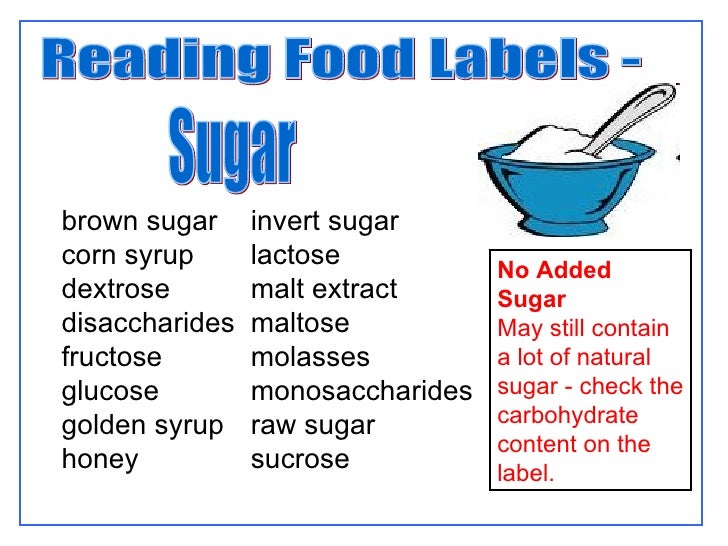

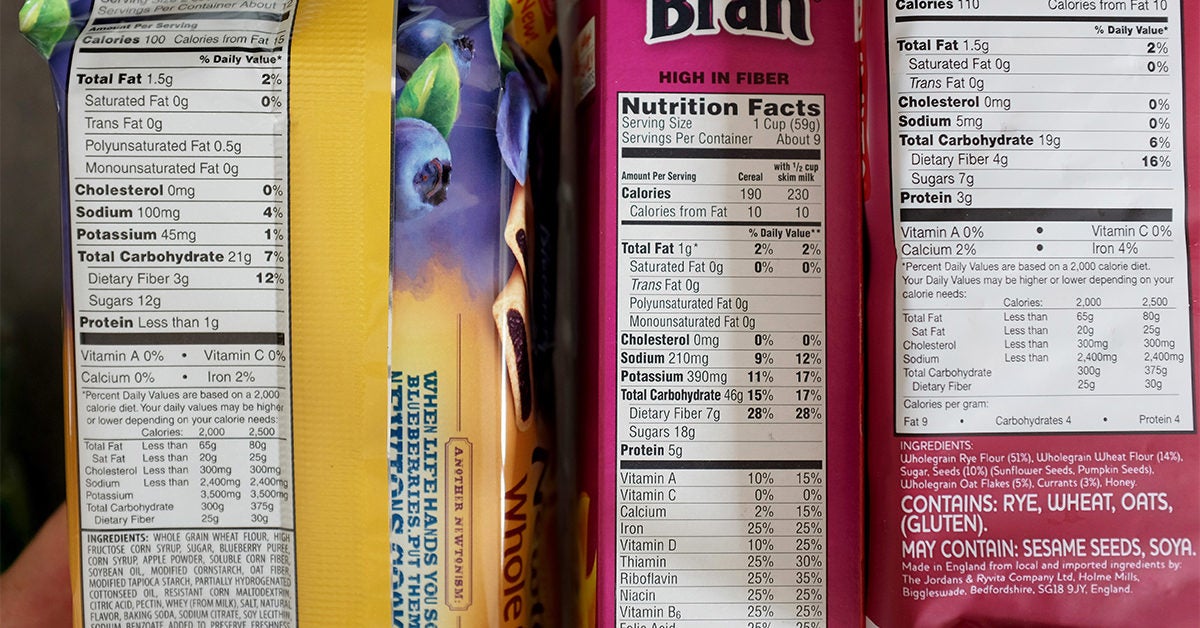
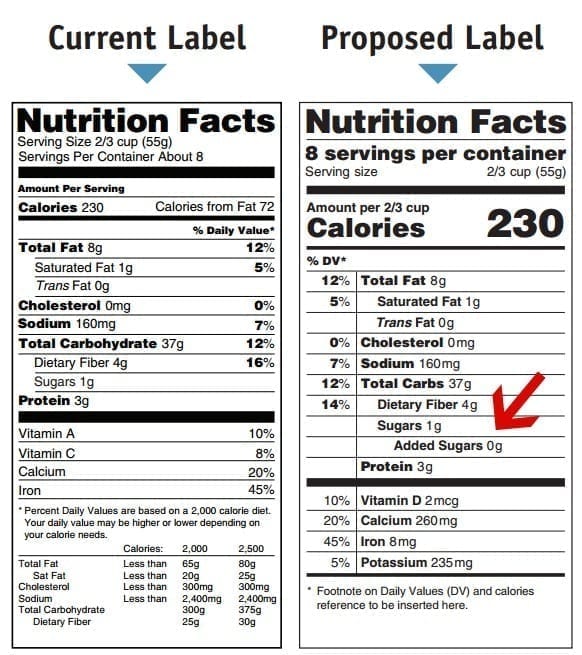
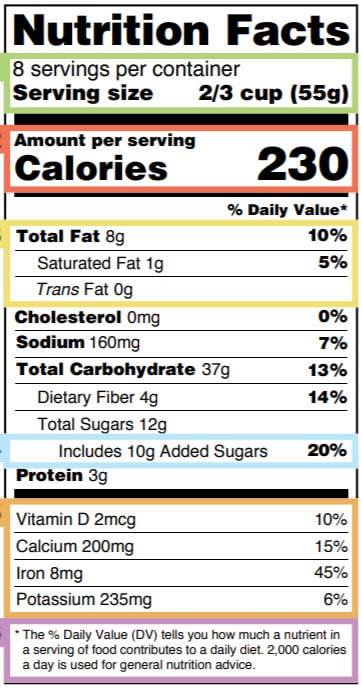



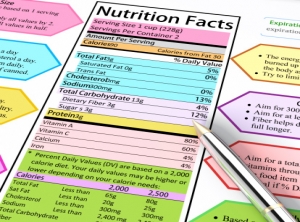
Post a Comment for "45 how to read the sugar label on food labels"